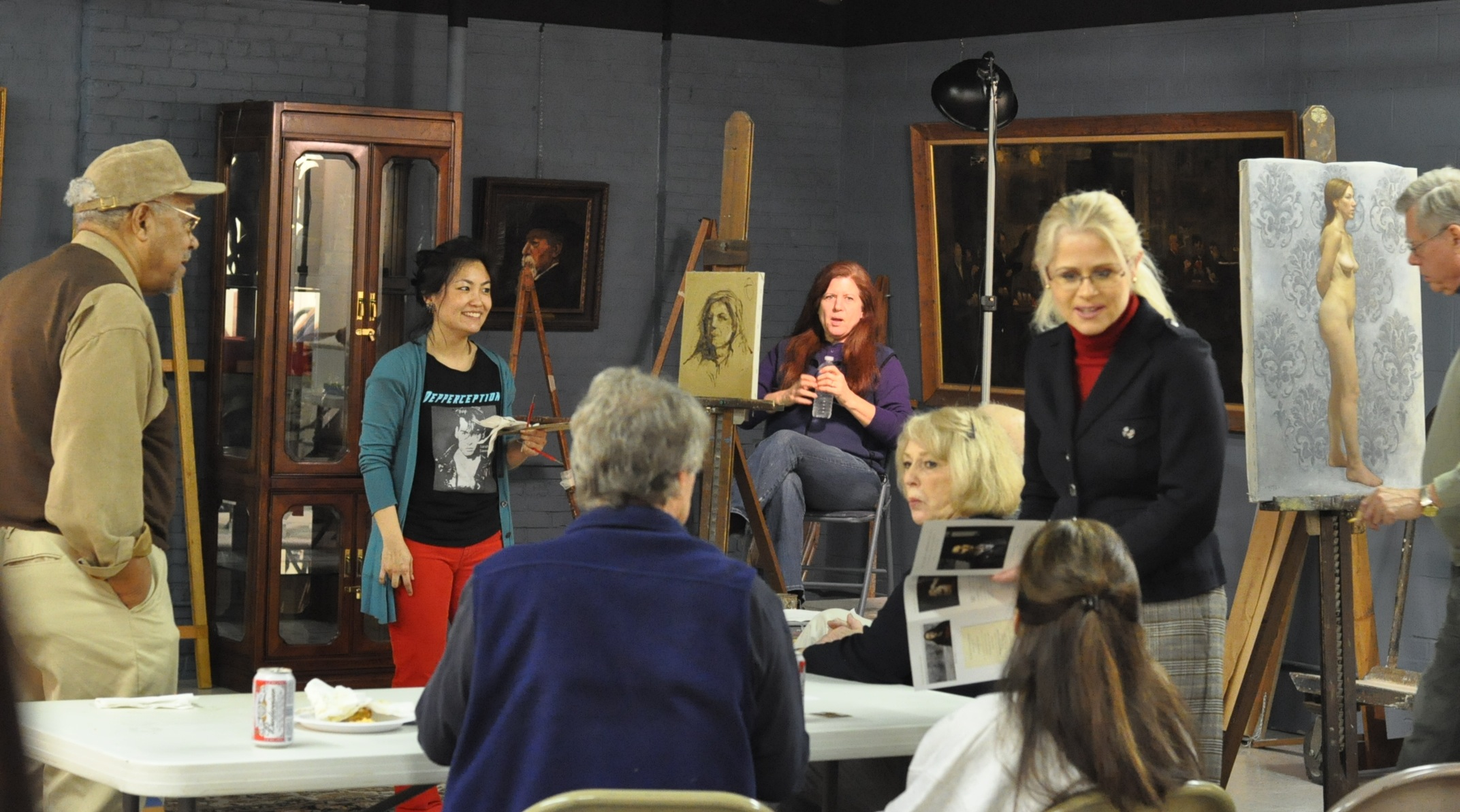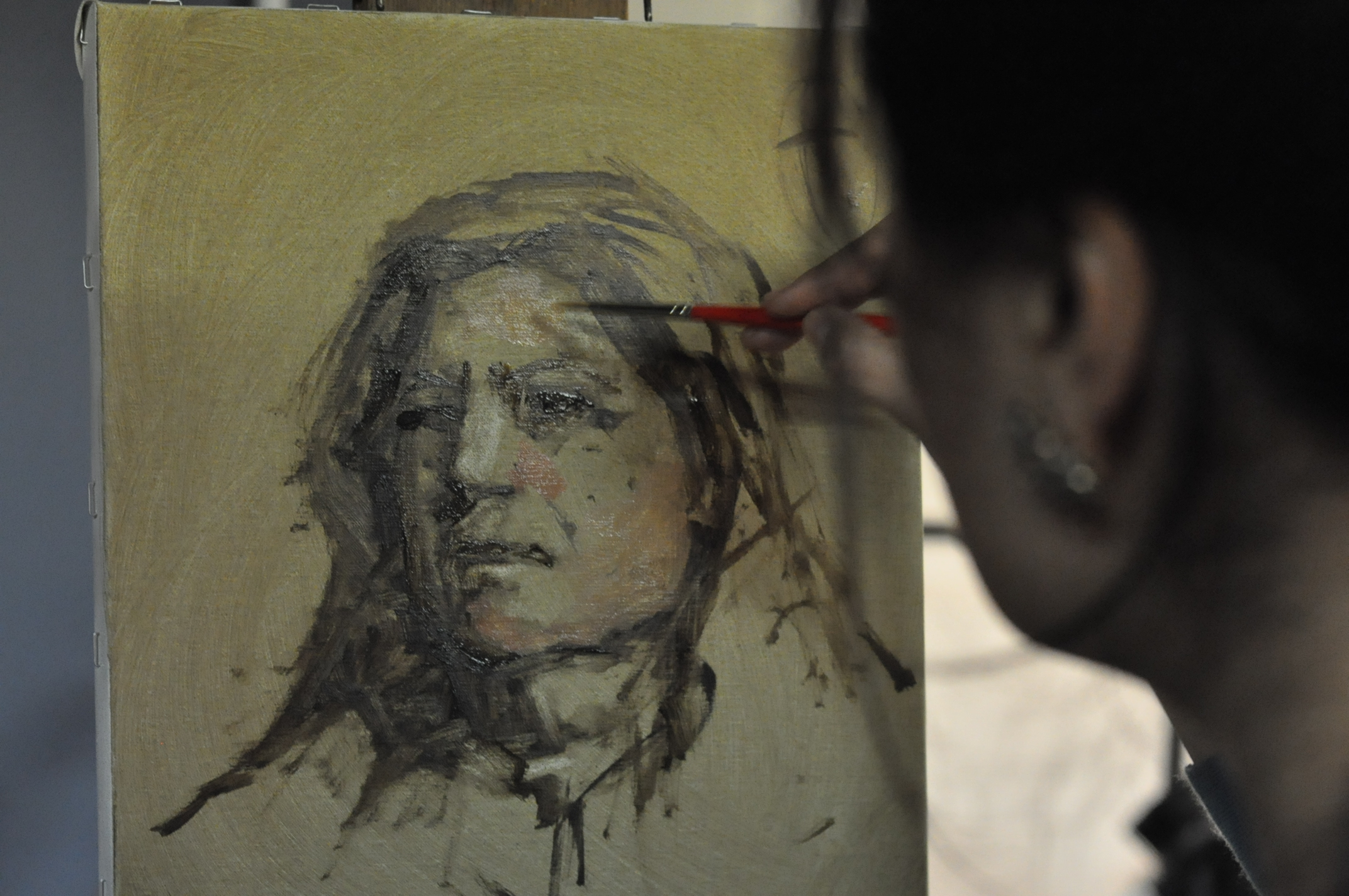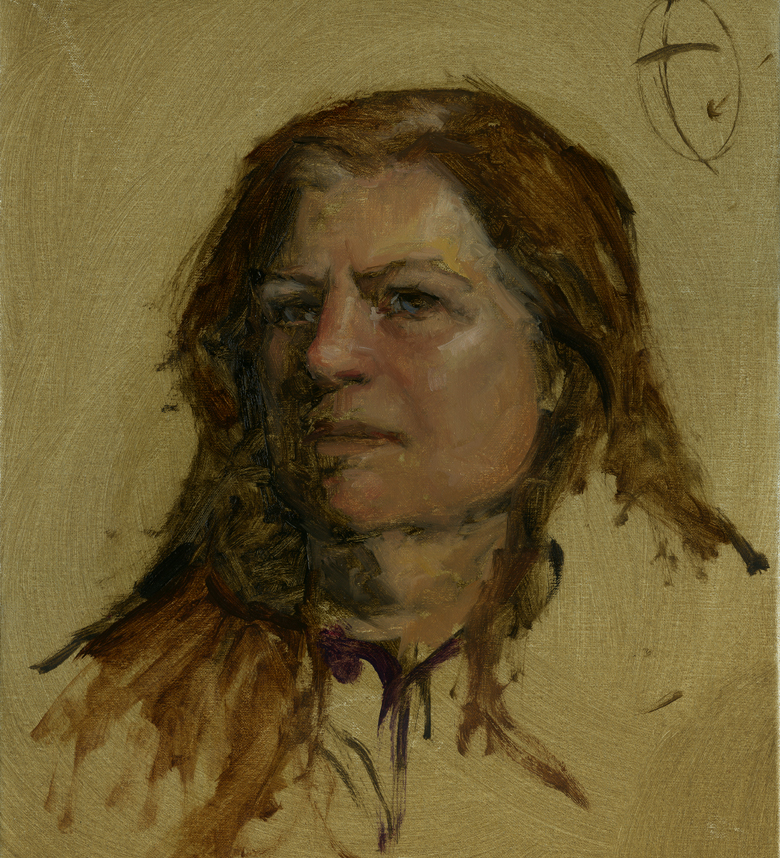Charcoal Club Demo
Last week I was invited to the Charcoal Club of Baltimore to give a demonstration. One of the attendees was kind enough to sit for me, and I had a bit less than 2 hours. Here's us during a break.  I explained my strategy for doing a portrait sketch. Here it is briefly:
I explained my strategy for doing a portrait sketch. Here it is briefly:
1. Get the envelope and block in as soon as possible.
2. Within the first 20 minutes, get the biggest light shape and biggest dark shape and try to get the terminator (the line between the light shape and the shadow shape). Double check the width:height ratio, and estimate the vertical and horizontal halves. I pay attention to the gesture.
3. The next 20 minutes, I double check my measurements, and then begin to develop the character of the light and shadow shapes by finding dividing points within each shape. I flick my eye from one point to another, "triangulating" to make sure that I'm getting distances between points correct.
4. I think about the 2-dimensions as having to correlate to what is going on 3-dimensionally, and conceptually. In other words, I think about whether what I'm drawing is consistent with structure, perspective, anatomy, etc.
5. I start to transition into the 3-dimensional by doing a posterization, or a color match. I think about the value range and the hue/saturation of the brush strokes I'm putting down. I am not matching values, but rather trying to stabilize a range for myself within which to work. The colors are tentative and can be manipulated. Generally, I try to calibrate the shadow value/color/chroma, forehead value/color/chroma, cheek value/color/chroma, nose value/color/chroma, and chin value/color/chroma, all the while thinking of how the light distributes on the form (e.g., what is the light most facing plane, etc.).
 6. When the posterization is pretty much completed, I transition into turning the form between areas that I have posterized. I always start with the highlight and the lightest facing plane. The color principle that generally rules given the kind of light set up I have is that chroma or saturation is deepest in the plane just after the light most facing plane (due to blow out from the highlight). I find that the swath across the cheeks and nose are "ruddier" or redder than the forehead or chin, and the chin-- because it is less illuminated-- tends to lose a lot of saturation (or gets greyed out) towards the shadow.
6. When the posterization is pretty much completed, I transition into turning the form between areas that I have posterized. I always start with the highlight and the lightest facing plane. The color principle that generally rules given the kind of light set up I have is that chroma or saturation is deepest in the plane just after the light most facing plane (due to blow out from the highlight). I find that the swath across the cheeks and nose are "ruddier" or redder than the forehead or chin, and the chin-- because it is less illuminated-- tends to lose a lot of saturation (or gets greyed out) towards the shadow.
Here is the final product. It is sketchier than I normally work, but I usually give myself about 3-4 hours.

